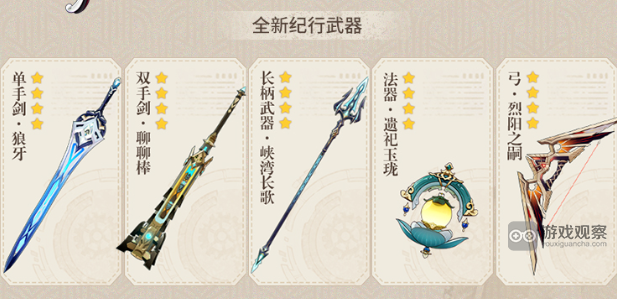很多人惊叹于Solon的注入能力,一个注解怎可注万物?
一、注解注入器
Solon Ioc的四大魔法之一:注解注入器(
BeanInjector<T extends Annotation>
)。在扫描时,Solon会检查相关组件的字段或者参数,上面有没有注解?如果有注解,有没有对应的注入器注册过?如果有,则执行注入器。
1、什么是注解?
注解一般也叫元数据,是一种代码级别的说明性内容。编译器在编译时,可以借助注解产生很多魔法效果;Solon Ioc在运行时,也借助注解产生了很多魔法效果。
其中,注解注入器便是Solon Ioc的四大魔法之一。
2、注入器接口是怎么样的?
@FunctionalInterface
public interface BeanInjector<T extends Annotation> {
void doInject(VarHolder vh, T anno);
}
其中:
- vh,用于接收变量数据
- anno,则是声明的注解
3、Solon Ioc的注入器注册接口
void beanInjectorAdd(Class<T> annoClz, BeanInjector<T> injector);
void beanInjectorAdd(Class<T> annoClz, Class<?> targetClz, BeanInjector<T> injector);
二、为什么也可叫“虚空”注入器?
这个是因为,Solon的注入是执行一个接口,而不是即定的内容。内容,可以是现成的,也可以是动态构建的。所以很“虚空”。
1、分解内置的
@Inject
注解实现
@Inject
@Inject
的简单使用示例
//主入配置
@Component
public class DemoService{
@Inject("${track.url}")
String trackUrl;
@Inject("${track.db1}")
HikariDataSource trackDs;
}
//注入 bean
@Component
public class DemoService{
@Inject
private static TrackService trackService;
@Inject("userService")
private UserService userService;
}
注入器的能力实现剖析(简单的示意实现,框架的实现比这个复杂)
context.beanInjectorAdd(Inject.class, (vh, anno) -> {
//声明:是否必须要注入?
vh.required(anno.required());
if (Utils.isEmpty(anno.value)) {
//没有值,说明是 bean type 注入
vh.content().getBeanAsync(vh.type(), bean->{ //vh.content() 即 context。在“热插拨”时可能会不同
vh.setValue(bean);
});
} else {
if(anno.value().startsWith("${")) {
//说明是配置注入
String val = vh.content().cfg().getByExpr(anno.value());
vh.setValue(val);
} else {
//说明是 bean name 注入
vh.content().getBeanAsync(anno.value(), bean->{
vh.setValue(bean);
});
}
}
});
2、“类型增强”注入器。魔法的升级!
Solon内置的注入器,你不喜欢?
想换掉实现行不行?行!完全换掉代码太多,想为特定的类型增加注入行不行?也行!比如,我们设计了一个
EsMapper<T>
用于操作Elasticsearch。然后可以自由的扩展:
public interface AuthorMapper extends EsMapper<Author> {
}
public interface CommentMapper extends EsMapper<Comment> {
}
public interface ContactMapper extends EsMapper<Contact> {
}
public interface DocumentMapper extends EsMapper<Document> {
}
估计还会想扩展更多的子类?
“类型增强” 注入器在手,一切我有。
EsMapperFactory esMapperFactory;
context.beanInjectorAdd(Inject.class, EsMapper.class, (vh, anno) -> {
EsMapper mapper = esMapperFactory.create(vh.getType());
vh.setValue(mapper);
});
可以再借用容器的“缓存”特性,同类型的注入性能就提高了:
EsMapperFactory esMapperFactory;
context.beanInjectorAdd(Inject.class, EsMapper.class, (vh, anno) -> {
EsMapper mapper = vh.context().getBean(vh.getType());
if (mapper == null) {
mapper = esMapperFactory.create(vh.type());
vh.context().wrapAndPut(mapper.getClass(), bean); //有可能被代理了,类型与 vh.getType() 不同
vh.context().wrapAndPut(vh.getType(), bean);
}
vh.setValue(mapper);
});
如果有“多源”的概念,我们还可以支持
@Inject("name")
:
EsMapperFactory esMapperFactory;
context.beanInjectorAdd(Inject.class, EsMapper.class, (vh, anno) -> {
EsMapper mapper = null;
if (Utils.isEmpty(anno.value)) {
//按类型取
mapper = vh.context().getBean(vh.getType());
} else {
//按名字取
mapper = vh.context().getBean(anno.value());
}
if (mapper == null) {
mapper = esMapperFactory.create(anno.value(), vh.type());
if (Utils.isEmpty(anno.value)) {
//按类注型注入;就按类型缓存
vh.context().wrapAndPut(mapper.getClass(), bean); //有可能被代理了,类型与 vh.getType() 不同
vh.context().wrapAndPut(vh.getType(), bean);
} else {
//按类名字注入;就按名字缓存
vh.context().wrapAndPut(anno.value(), bean);
}
}
vh.setValue(mapper);
});
现在我们可以用了(吃饭喽,下班喽!):
//主入配置
@Component
public class DemoService{
@Inject
DocumentMapper documentMapper;
@Inject("es2")
DocumentMapper documentMapper2;
}
未经允许不得转载:大白鲨游戏网 » 深度解读Solon Ioc的注解注入器


 和平精英巡查员的衣服怎么获得?巡查员衣服获取方法介绍
和平精英巡查员的衣服怎么获得?巡查员衣服获取方法介绍 原神久岐忍角色等级突破材料一览
原神久岐忍角色等级突破材料一览 《王者荣耀》上官婉儿怎么飞天 三个基本连招口诀推荐
《王者荣耀》上官婉儿怎么飞天 三个基本连招口诀推荐 抖音创作服务平台在哪里打开 创作服务平台功能介绍
抖音创作服务平台在哪里打开 创作服务平台功能介绍


